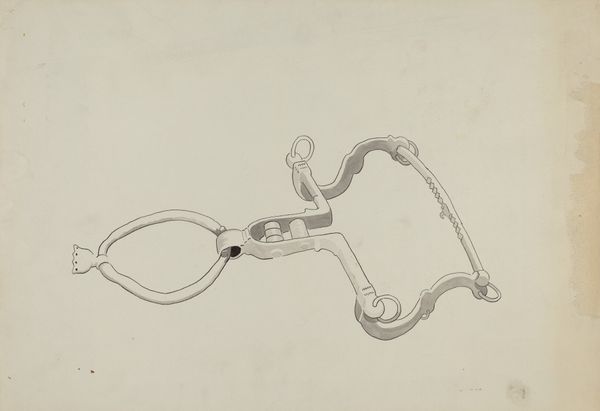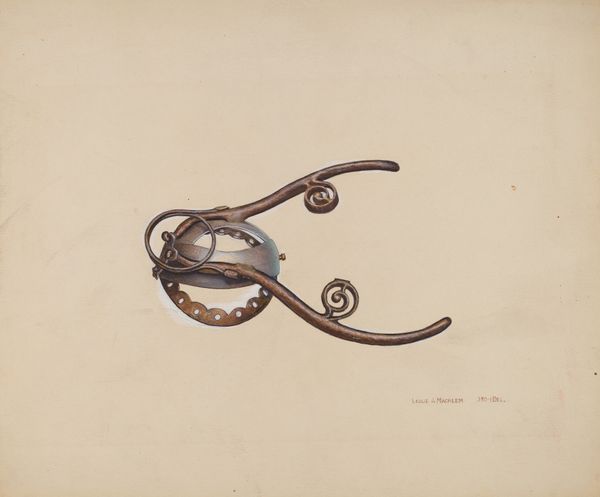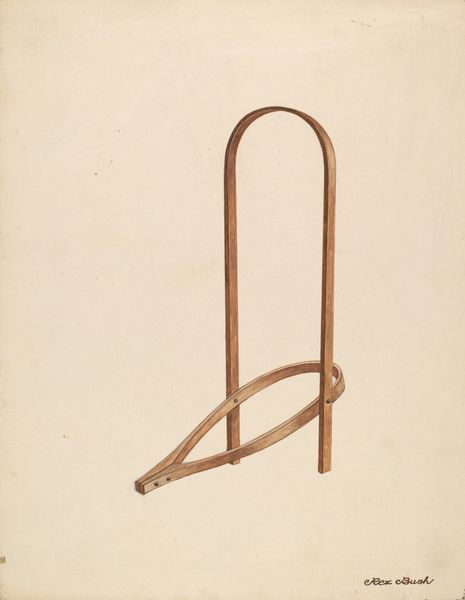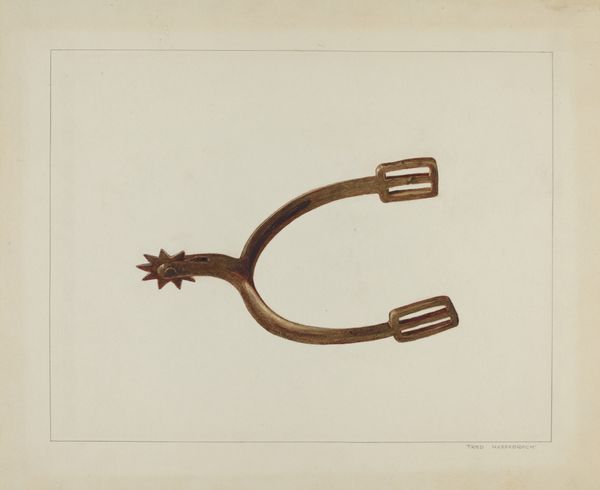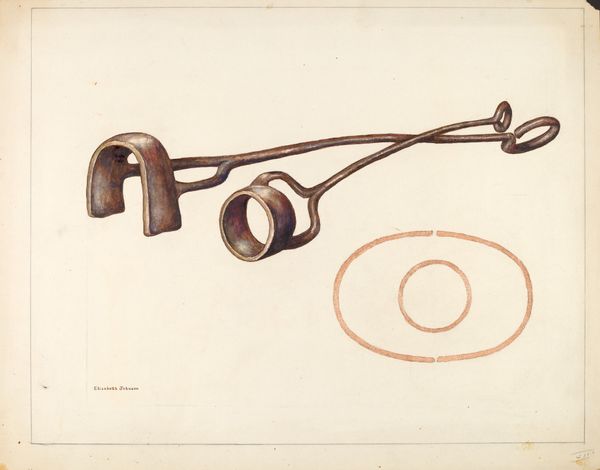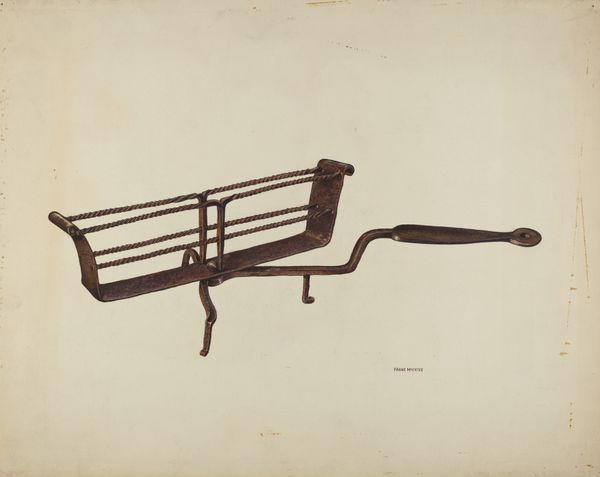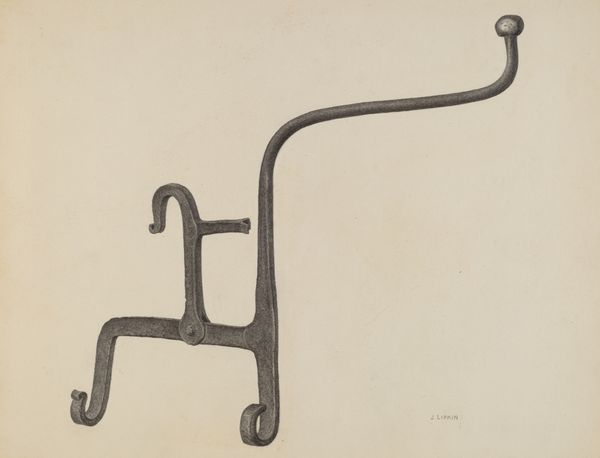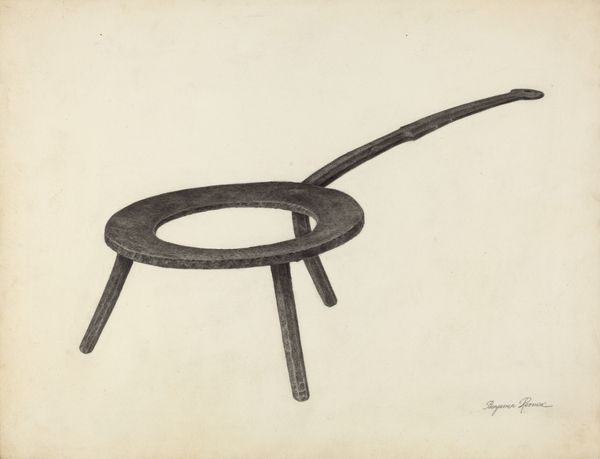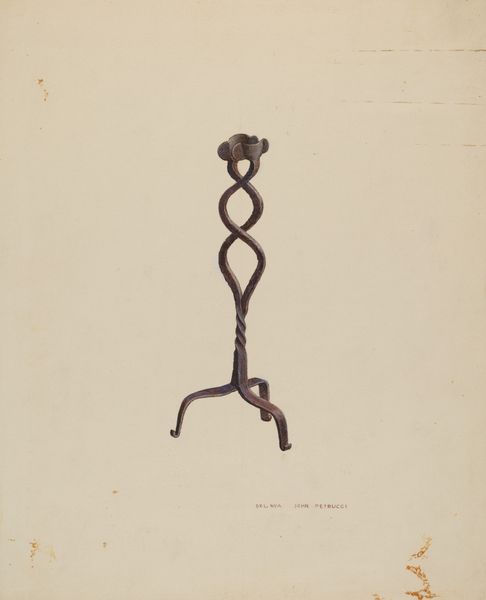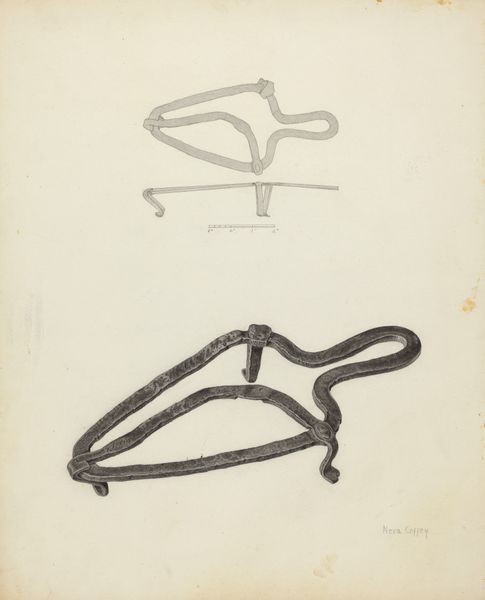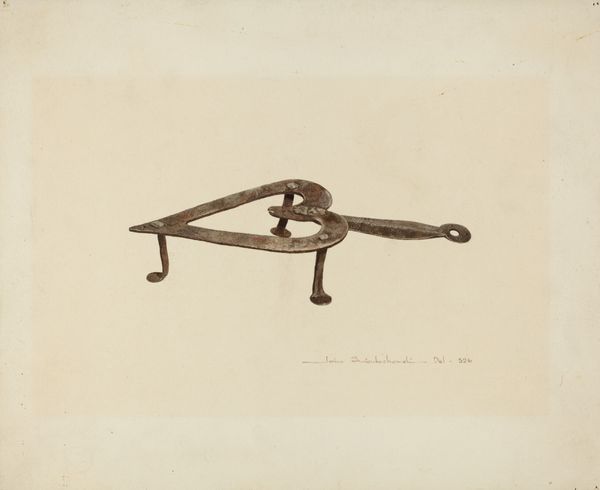
drawing, watercolor
#
drawing
#
water colours
#
watercolor
#
watercolour illustration
#
watercolor
#
realism
Dimensions: overall: 26.7 x 35.8 cm (10 1/2 x 14 1/8 in.) Original IAD Object: ends: 3 1/2" high; 2 1/4" wide; bit bars: 5 1/2" long; rein rings: 1 1/4" in diameter
Copyright: National Gallery of Art: CC0 1.0
Editor: So this watercolor by Harold Ballerd from 1940 is titled "\"Jay Eye See\" Driving Bit". It feels quite detailed for a watercolor, focusing on the texture of the aged metal. What do you make of it? Curator: Well, considering it's a drawing of a "driving bit," it speaks volumes about the relationship between humans, animals, and labor in 1940s America. The focus isn't just on the object itself, but on its function within a system of work. Think about the materials - the metal, carefully rendered in watercolor - and the labour that went into both its production and its use. How does this shift your understanding? Editor: That's a good point. I was so caught up in the rendering, I missed the bigger picture. You're saying the drawing documents a particular way of life, and perhaps the shifting roles of animals. Do you think Ballerd romanticizes it at all? Curator: Not necessarily romanticizes, but perhaps acknowledges. Watercolour, often associated with leisure and 'high art', is here deployed to carefully capture the essence of a tool. Why watercolour for a mundane object and not, say, oil? Ballerd might be questioning these traditional distinctions between "high" and "low". And if so, how does that affect the social hierarchy implicit to artistic value judgments? Editor: I never thought of it that way. By using watercolor, he's elevating the status of this functional object, implying it's worth considering beyond its practical purpose. That's fascinating! Curator: Exactly! It’s not just about what is represented but also about HOW and with what means it is represented that shapes meaning. Considering both making and usage shifts our view of representation. Editor: That makes so much sense now! Thinking about the social context changes how I interpret the artwork itself. Curator: Precisely. The material, process, labor: these are key ingredients of this representational cake.
Comments
No comments
Be the first to comment and join the conversation on the ultimate creative platform.
